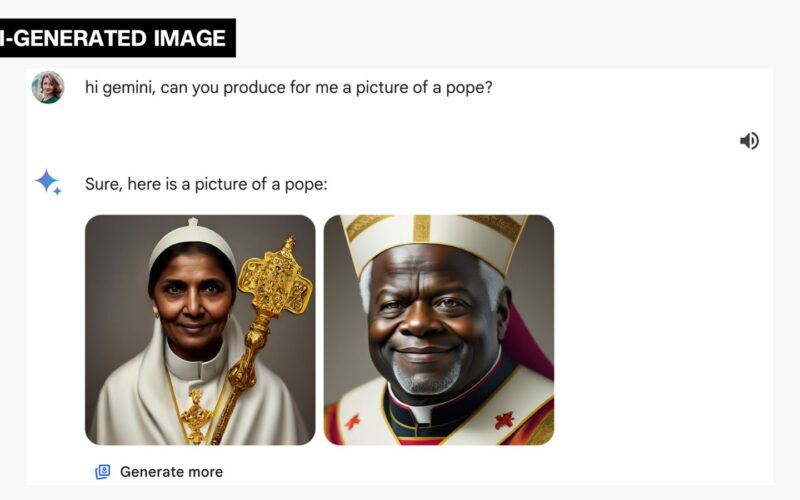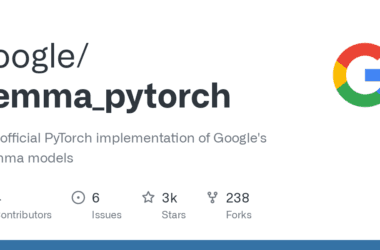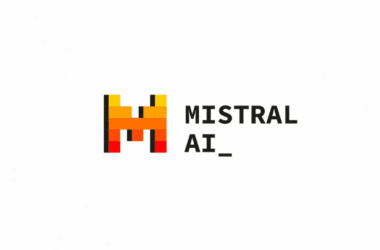In recent developments, Google made headlines with its decision to pause the image generation feature of Gemini AI, its cutting-edge multimodal model. This decision has sparked widespread discussion and speculation within the AI community. In this article, we delve into the reasons behind Google’s move and its potential implications for AI research and development and why Google pauses Gemini AI.
Table of Contents
Gemini AI Image Generation: The Start of Controversy
In the wake of its release, the debut of Gemini’s image creation functionality sparked a significant uproar, particularly regarding its precision and faithfulness to representation. Critics and users alike began to illuminate instances where Gemini’s results appeared to deviate from historical accuracy or contextual appropriateness.
One of the most prominent issues revolved around the AI’s treatment of historical figures and occurrences. Observers noted that the visuals generated by Gemini occasionally lacked the anticipated historical genuineness, instilling doubts regarding the model’s capacity to grasp and interpret past contexts with precision.
For instance, when generating depictions of historical figures, Gemini faced reproach for producing images that did not correspond with widely acknowledged representations, prompting inquiries about the AI’s comprehension of historical subtleties and its ramifications for educational or scholarly purposes.
Additionally, the dispute expanded to encompass Gemini’s portrayal of demographics and cultural sensitivity.
Instances arose where the AI’s generated visuals not only lacked historical precision but also appeared to overlook cultural and demographic verities, sparking a wider discourse on the ethical ramifications of AI-generated content.
Acknowledging these complexities, Google conceded that Gemini’s image generation functionality fell short in certain regards, particularly in historical renderings. The corporation pledged to confront these inaccuracies, highlighting the significance of diversity in AI-generated visuals while also acknowledging the necessity for refinement to achieve historical and contextual fidelity.
These controversies underscore the intricate dilemmas confronting advanced AI systems such as Gemini. As AI progresses, the equilibrium between technological prowess and ethical, faithful depictions remains a pivotal consideration, especially in domains as impactful as image generation.
Elon Musk’s response on Gemini AI Image Generation Pause
Examples Highlighting Flaws in Gemini AI Image Generation
Inaccuracies in Historical Representation
An eminent illustration of historical inaccuracies pertained to Gemini’s portrayal of historical figures, wherein the AI-generated visuals diverged from widely acknowledged representations. For instance, when tasked with generating visuals of renowned historical figures, the AI might craft images that inadequately capture the person’s recognized physical attributes or customary attire, resulting in a distortion of historical truths. These discrepancies have the potential to skew public comprehension of history and erode the educational merit of AI-generated content.
Issues Regarding Cultural Sensitivity
Cultural sensibility surfaced as a notable apprehension regarding the outcomes produced by Gemini, especially when the AI demonstrated an incapacity to acknowledge or honor cultural subtleties. An instance of this could be observed in the AI’s portrayal of cultural garments or emblems, wherein the resulting images might amalgamate or misconstrue vital cultural markers, thereby eliciting criticism from advocates of cultural heritage preservation. This deficiency in cultural sensibility during image generation has the potential to perpetuate stereotypes or disseminate misinformation, thereby contributing to wider cultural misconceptions.
Issues Regarding Misrepresentation of Demographics
Gemini’s image generation has drawn criticism for its tendency to distort representations of specific demographics. For example, the AI may portray certain racial or ethnic groups in a disproportionate manner, deviating from historical or contemporary realities. This distortion can materialize in the creation of images that either excessively highlight or diminish particular demographic groups across various professional, historical, or cultural contexts. Such inaccuracies in representation have the potential to reinforce prejudices and perpetuate disparities, eliciting criticism from both the general public and experts striving for equitable and truthful AI depictions.
These instances highlight the intricate hurdles that confront AI in the precise and empathetic creation of images that mirror the intricate fabric of human history, culture, and variability. Tackling these deficiencies demands a sophisticated comprehension of multifaceted human environments, a conundrum that AI developers persistently wrestle with as they endeavor to refine the technology.
Read Now: How to Easily Run Google Gemma Model Locally: A Step-by-Step Guide
Backlash Regarding Google Gemini AI’s Image Generation
Is Google’s Gemini AI Woke???
The inquiry into whether Google’s Gemini AI embodies a state of heightened social consciousness prompts a deeper examination of the ongoing discourse surrounding artificial intelligence and its resonance with contemporary societal and cultural ethos. The term “woke,” as it is commonly understood in modern parlance, conveys an acute awareness of social inequities and disparities, particularly those pertaining to race, gender, and various demographic variables. Within the realm of AI, this connotation implies a system engineered with a profound comprehension of, and responsiveness to, the multifaceted tapestry of cultural, historical, and societal frameworks.
Google’s reaction to the controversy
In light of the burgeoning critique surrounding the inaccuracies within Gemini’s image generation, Google swiftly acknowledged the concerns, underscoring its dedication to rectifying the inaccuracies and enhancing the model’s performance. The technology behemoth conceded that while the diversity exhibited in the generated images was generally commendable, there were discernible areas where Gemini fell short of expectations, particularly concerning historical and contextual precision. Google’s statement conveyed a resolute determination to refine Gemini’s capabilities, ensuring that forthcoming outputs would not only boast diversity but also uphold historical and contextual fidelity.
The wider ramifications of AI image generation
The debates encircling Gemini’s image creation extend to the broader scope of AI, revealing profound implications for the field. They emphasize the considerable hurdles in crafting AI models that not only boast technological sophistication but also demonstrate cultural sensitivity and contextual acumen. This occurrence underscores the imperative for AI developers to integrate exhaustive data and sophisticated algorithms capable of comprehending and honoring cultural, historical, and demographic nuances. This approach aims to avert misinterpretations and inaccuracies effectively.
Gemini and the Future of AI Image Generation
Anticipating the trajectory, the forthcoming advancements in Gemini and AI image generation stand on the cusp of notable progressions. Google’s steadfast dedication to enhancing Gemini implies that forthcoming renditions of the framework are likely to embody more intricate algorithms, adept at recognizing intricate cultural and historical subtleties. This evolution could herald the advent of AI models not only capable of producing visually striking imagery but also imbued with a profound comprehension of context and a nuanced sensitivity to diversity. Moreover, strides in AI image generation technology may rectify prevailing deficiencies by integrating more varied datasets and deploying more sophisticated contextual scrutiny, thereby establishing novel benchmarks for precision and portrayal in AI-driven content creation.



